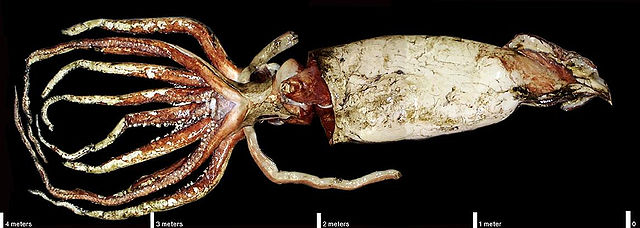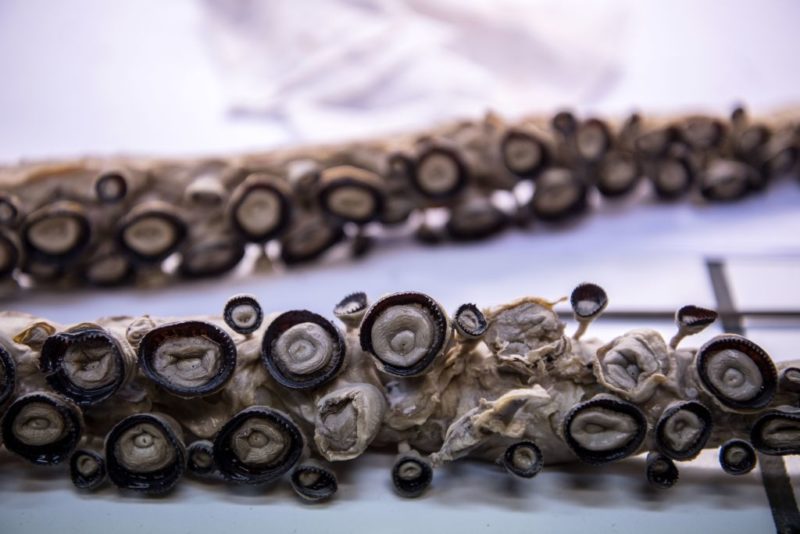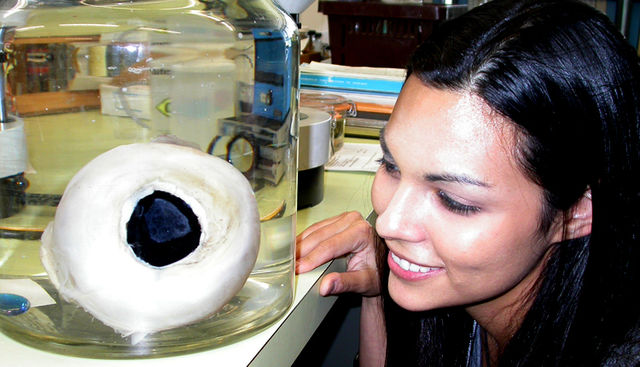Giant Squid Washes Ashore On Cape Town Beach
A giant squid was discovered washed up on Scarborough Beach near Cape Town, South Africa on August 16, 2022. The rare sea creature, known for being one of the world’s largest invertebrates, is the second to wash up in the area in recent months and has captivated the scientific community.

British author Tim Dee was birdwatching in the area when he learned about the discovery from a local group. When he ventured down to the beach, he saw the nearly 14-foot long creature, with its fist-sized beak and dish-sized eye. He took photos and a video, which he posted to Twitter.
Giant squids, scientifically known as Architeuthis dux, are among the least-studied sea creatures in the world, due to how little humans come upon them. In fact, a Japanese research team took the first images of one in its natural habitat less than two decades ago, in 2004.
“The availability of information on giant squids is relatively poor and is either based on dead or dying animals that have been washed ashore or captured in commercial trawl nets,” Dylan Clarke, a marine scientist and curator at Cape Town’s Iziko South African Museum, told news24.
Giant squid close ups – wrecked this morning on Scarborough beach, just north of the Cape of Good Hope: pic.twitter.com/m7YqL9H9gQ
— Tim Dee (@TimDee4) August 16, 2022
Living 1,640 to 3,280 feet below sea level, they range in size from 39-43 feet for females and 33 feet for males. Their eyes can grow up to 11 inches in diameter, with a pupil measuring 3.5 inches, which allows them to better detect light in the deepest depths of the ocean.
Aside from their large size, what makes giant squids so terrifying is that they are the only known predators of pilot whales, sperm whales, southern sleeper sharks and even killer whales. Along with their eight arms, they have two longer tentacles, which they use to catch prey, before pulling them toward their beak.
Giant squids live across the world, including near continental and island slopes in the North Atlantic Ocean, the South Atlantic, as well as in the Pacific Ocean. They’ve primarily been spotted around South Africa and areas of the northwest Pacific.

The recent discovery follows that of another giant squid in April 2022, just six miles down the coast on Long Beach, in Kommetjie. Unlike the one found in August, that creature measured only 11.5 feet and was in relatively poor condition.
Samples have been collected from the squid and will be taken to the Iziko South African Museum for analysis. One of the key things researchers hope to uncover is how it died, but that could be difficult without taking a close look of the creature’s internal organs.
It’s currently theorized that it may have ventured into shallow waters to feed and got sucked into a ship’s propellor, “but this is difficult to prove without witnesses,” said Clarke.
“The literature … suggests that they come up to shallower waters because they display a behavior called diel vertical migration. In other words, they venture into shallower water during the evening to feet and migrate back to deeper waters during the day.”

More from us: Did Bear Grylls Enjoy Any of the Survival Foods He Ate In the Wild?
The researchers are looking to use the samples collected to sequence the squid’s DNA and run analyses to detect stable isotopes and pollutants in its flesh, along with an examination of its digestive system, which would allow a glimpse into its feeding history.
They also should be able to determine how old the creature was by looking at its reproductive organs and small mineralized masses in the sensory organs known as “statoliths.”





